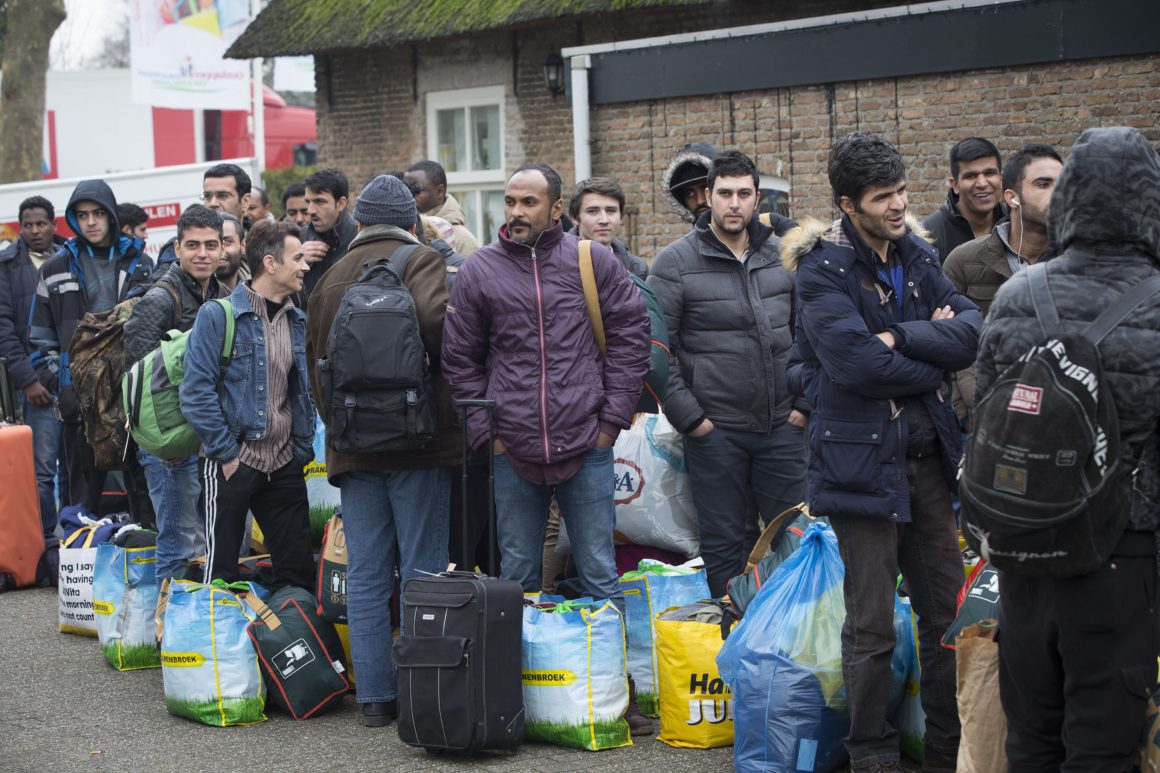New Approach: Low-Security Detention And Area Bans For Asylum Seekers In The Netherlands

Table of Contents
The Rise of Low-Security Detention Centers in the Netherlands
The rationale behind the shift from high-security to low-security detention centers stems from a multifaceted approach. High-security facilities are undeniably expensive to operate, demanding significant resources for robust security measures. Furthermore, the harsh environment of high-security detention has been linked to negative mental health outcomes for detainees. The Dutch government hopes that low-security facilities offer a more humane and cost-effective alternative.
These low-security facilities are characterized by less stringent security measures, fostering a more open and community-integrated environment. The aim is to create an atmosphere conducive to the well-being of asylum seekers while maintaining a degree of control.
- Reduced costs compared to high-security detention: Operating costs are significantly lower due to reduced staffing and security infrastructure needs.
- Improved mental health outcomes for detainees: The less restrictive environment aims to reduce stress and anxiety among asylum seekers.
- Potential for greater integration into Dutch society: Opportunities for community engagement and participation in programs are more readily available.
- Concerns regarding escape risk and public safety: This remains a significant challenge, requiring careful monitoring and risk assessment.
While specific examples and precise statistics regarding the number of asylum seekers in low-security facilities are subject to change and may not be publicly available in detail, the trend towards this approach is evident in the Dutch government's policy statements and reports.
Area Bans as an Alternative to Detention
Area bans represent another key element of the Netherlands' new approach. This measure restricts the movement of asylum seekers within the country, serving as an alternative to detention in certain cases. The legal framework governing area bans is complex and subject to ongoing legal challenges. Generally, area bans are imposed when there are concerns about an individual's potential threat to public order or when their cooperation with asylum procedures is deemed insufficient.
- Geographical restrictions imposed: Asylum seekers are confined to a specific geographical area, limiting their freedom of movement.
- Impact on access to essential services: Restrictions can hinder access to legal aid, healthcare, and other vital services, potentially undermining due process and the well-being of asylum seekers.
- Effects on social integration and community connections: Area bans can severely limit opportunities for social interaction and integration into Dutch society.
- Potential for discrimination and human rights violations: Concerns have been raised about the potential for discriminatory application of area bans and violations of fundamental human rights.
The effectiveness of area bans in achieving their stated goals remains a subject of debate and ongoing evaluation. Data on recidivism rates and successful integration among those subject to area bans are crucial for assessing the policy's success.
Public Opinion and Political Debate Surrounding the New Approach
The new approach to low-security detention and area bans has sparked significant public debate in the Netherlands. Government officials emphasize the need for a more efficient and humane asylum system while managing public safety concerns. However, human rights organizations and some local communities express deep concerns about the potential for abuse and violations of asylum seekers' rights.
- Concerns about public safety: Opponents argue that low-security detention increases the risk of escape and poses a threat to public safety.
- Debates regarding human rights and the ethical implications: Criticisms focus on the potential for discrimination and the impact on the mental health and well-being of asylum seekers.
- Impact on integration efforts: Area bans are seen by some as counterproductive to integration efforts, isolating asylum seekers and hindering their ability to participate fully in Dutch society.
- Public perception of asylum seekers and the new policy: Public opinion is highly divided, with varying levels of support and opposition to the new approach.
Comparison with other European Immigration Policies
The Netherlands' approach to low-security detention and area bans differs from other European countries' immigration policies. Some countries heavily rely on high-security detention, while others prioritize integration programs and community-based support. A comparative analysis reveals that the Dutch system presents both strengths and weaknesses when viewed against international best practices. For example, the focus on cost-effectiveness and improved mental health outcomes aligns with some international human rights standards, while the potential limitations on access to services and the risk of discrimination need further scrutiny and improvement.
Conclusion
The implementation of low-security detention and area bans for asylum seekers in the Netherlands represents a significant shift in immigration policy. While the aim is to create a more humane and efficient system, it has also raised considerable concerns regarding public safety, human rights, and the potential for discrimination. The advantages of reduced costs and potentially improved mental health outcomes must be carefully weighed against the potential disadvantages, such as increased escape risk and limitations on access to essential services. Further research and ongoing evaluation are crucial to assess the long-term effectiveness and ethical implications of this approach. Continued dialogue and critical analysis are necessary to ensure that the system upholds both public safety and the human rights of asylum seekers. Understanding the complexities of this new approach – low-security detention and area bans – is vital for informed discussions about the future of asylum policy in the Netherlands.

Featured Posts
-
 Stevenson Already Planning For Next Season At Ipswich Town
May 11, 2025
Stevenson Already Planning For Next Season At Ipswich Town
May 11, 2025 -
 Unseen Hand Kushners Advice Shapes Trumps Middle East Strategy
May 11, 2025
Unseen Hand Kushners Advice Shapes Trumps Middle East Strategy
May 11, 2025 -
 Crazy Rich Asians Tv Series Officially In Development At Max
May 11, 2025
Crazy Rich Asians Tv Series Officially In Development At Max
May 11, 2025 -
 Celtics Unlikely 40 Point Performances A Historic Night
May 11, 2025
Celtics Unlikely 40 Point Performances A Historic Night
May 11, 2025 -
 Jessica Simpson And Birdie 6 Rock Matching Yellow Swimsuits
May 11, 2025
Jessica Simpson And Birdie 6 Rock Matching Yellow Swimsuits
May 11, 2025
